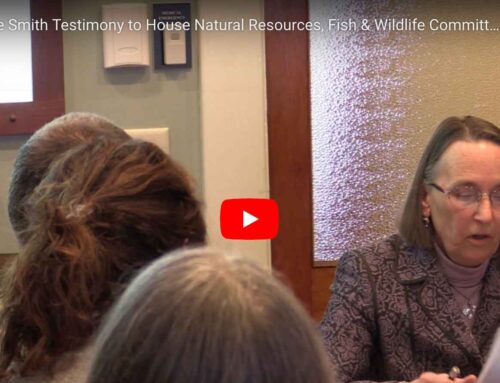https://vtdigger.org/2018/03/18/annette-smith-examination-vermonts-energy-policies/
Editor’s note: This commentary is by Annette Smith, who is the executive director of Vermonters for a Clean Environment Inc. http://www.vce.org/ She is a member of the Rutland Regional Planning Commission, where she currently chairs the ad hoc energy committee. She has lived off grid in Danby for 30 years, and was named he 2016 Burlington Free Press Vermonter of the Year.
Most Vermonters accept the reality of climate change and support shifting our energy needs towards renewables. But in my conversations with Vermonters I have found that almost no one fully understands the mechanisms that have been put in place to achieve the state’s renewable energy goals. In fact, our energy policies are so complicated and convoluted that even Vermont legislators – many of whom consistently vote in favor of bills purporting to bring the state closer to a goal of 90 percent renewables by 2050 – don’t really understand them.
To help citizens and policymakers make more informed decisions, Vermonters for a Clean Environment has just released a report, Understanding Vermont’s Energy Policies. The report gives an overview of Vermont’s renewable energy policies, and provides context about our place in the regional electric grid.
The major elements of Vermont’s energy policies include:
• A renewable energy standard (RES)
• A standard-offer program
• A net-metering program
• An energy planning process (Act 174)
• Arbitrage with renewable energy credits (RECs)
This commentary will briefly highlight just one of these policies, the sale and purchase of renewable energy credits. I urge readers to download the full report, which looks comprehensively at all of Vermont’s energy policies.
Vermonters can be forgiven for believing that the state is moving steadily towards the 90 percent renewables goal: there are massive wind projects on our ridgelines and huge solar arrays on hundreds of acres of former farmland. But the truth is that Vermont receives 0 percent of its energy from solar and 0 percent from wind after adjusting for REC sales. Even worse, Vermont emissions from electric power have actually doubled in the last decade. To understand how that’s possible, we need to understand how renewable energy credits operate.
Every solar, wind, biomass and hydro generator in Vermont creates two contracts, one for the energy generated and one for the renewable energy attributes – the RECs associated with that energy. Those RECs can be sold to utilities in other parts of New England, which are mandated by state rules to reduce their emissions: buying the renewable attributes of a project in Vermont may be considerably cheaper than switching from “dirty” fuels at home.
On the other side of the transaction, selling the RECs from a renewable source leaves what is referred to as “null power.” “Null power is not renewable but is the unspecified and undifferentiated power that has the attributes of the overall system mix.” [1] On a typical day this January that mix was 50 percent natural gas, 27 percent nuclear, 15 percent hydro, 7 percent renewables, and 1 percent coal.
The sale of RECs is further complicated by a quirk in Vermont policy that grants equal market status to RECs from Hydro-Quebec. Because Vermont is the only New England state to define Hydro-Quebec power as “renewable,” there is very little market for Hydro-Quebec’s RECs and they sell at a steep discount. Vermont utilities are further allowed to meet state renewable requirements by making what are known as “alternative compliance payments” equivalent to the value of Hydro-Quebec’s RECs.
This allows utilities to engage in arbitrage – simultaneously selling a product while buying the same product at a lower price. Premium Vermont RECs from large-scale wind, solar and biomass projects are sold to utilities in Massachusetts and Connecticut, while meeting Vermont’s requirements by paying a discounted alternative compliance payments fee.
Some describe the sale of RECs as a “shell game,” while its defenders say it is a way to lower prices for Vermont power consumers. But the REC market has fallen from about $0.05 /kWh at the end of 2012 to between $0.01 and $0.02 cents/kWh today. This means that utilities that relied on REC sales to keep rates down are in trouble – leading Washington Electric Cooperative, for example, to seek a 6 percent rate increase.[2]
Rates at Green Mountain Power are likely to climb as well. GMP entered into a 25-year contract to purchase power from Avangrid/Iberdrola’s Deerfield Wind project at $0.088/kWh. However it has been reported that “the developer has an agreement with Green Mountain Power to purchase 30 megawatts of power for 4.8 cents per kilowatt from the project once it is constructed.” [3] The difference of $0.04 is the REC value assumed by GMP for the life of the contract. GMP made no effort to protect ratepayers in the event that REC prices declined, which they have. GMP recently testified to the Vermont House Energy and Technology Committee that the company will be seeking a rate increase, partly due to the decline in the value of RECs.
The RECs are symptomatic of energy policies so complicated that few people understand them, including many of the politicians who voted for them. The entire system lacks transparency in terms of costs, profits and benefits; and because it is dependent on the same resource extraction model and levels of consumption as the fossil fuel-based system, it solves nothing in the long term.
The best possible outcomes are achieved when all stakeholders – utilities, developers, regulators, property owners, investors and communities – are well-informed partners in transparent, equitable solutions. I believe that our report is a sound basis for reasoned discussion toward that end.
Notes
[1] Green-e Glossary
[2] Washington Electric Will File For Rate Increase, By Steve Zind • Nov. 4, 2016
[3] First Wind Project on U.S. Forest Service Land Set to Break Ground, Terri Hallenbeck, Sept. 16, 2016


